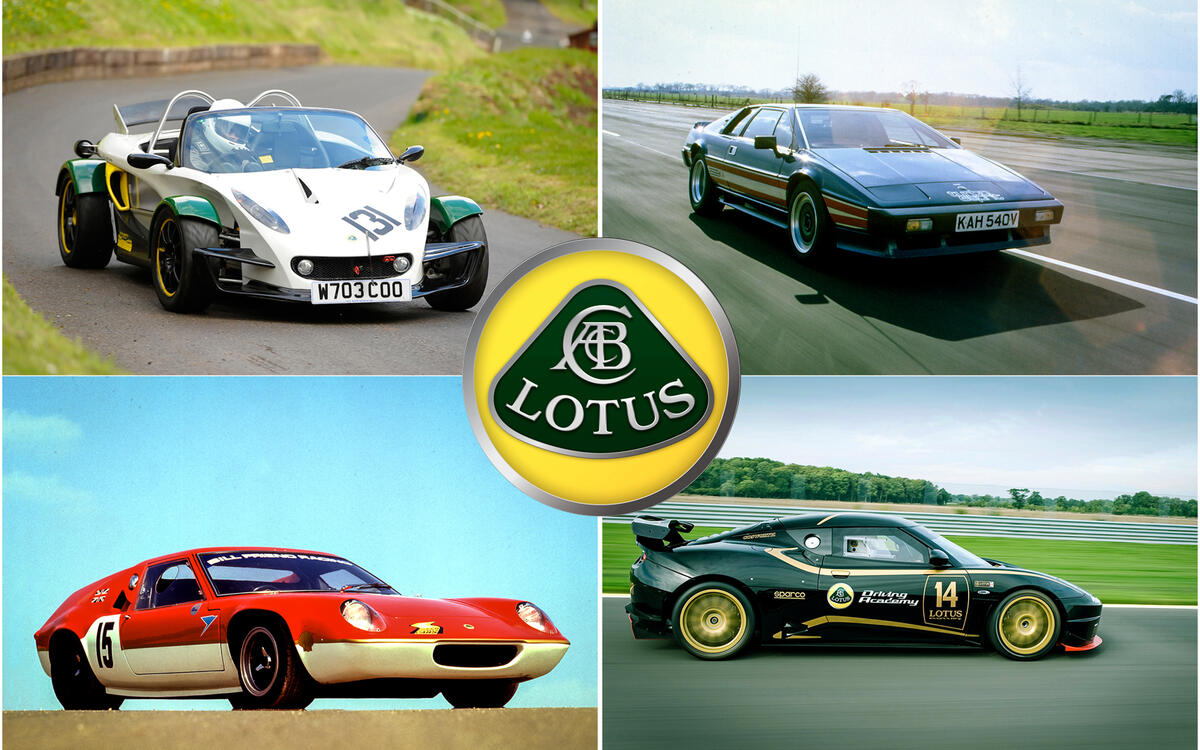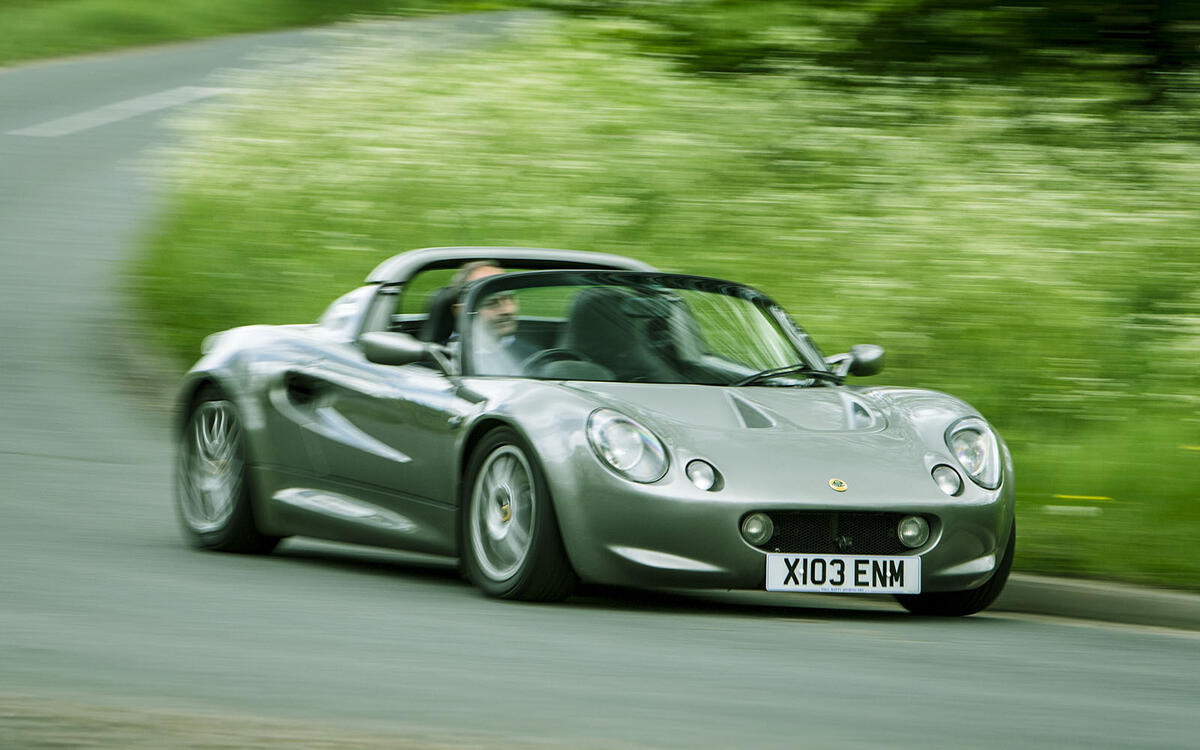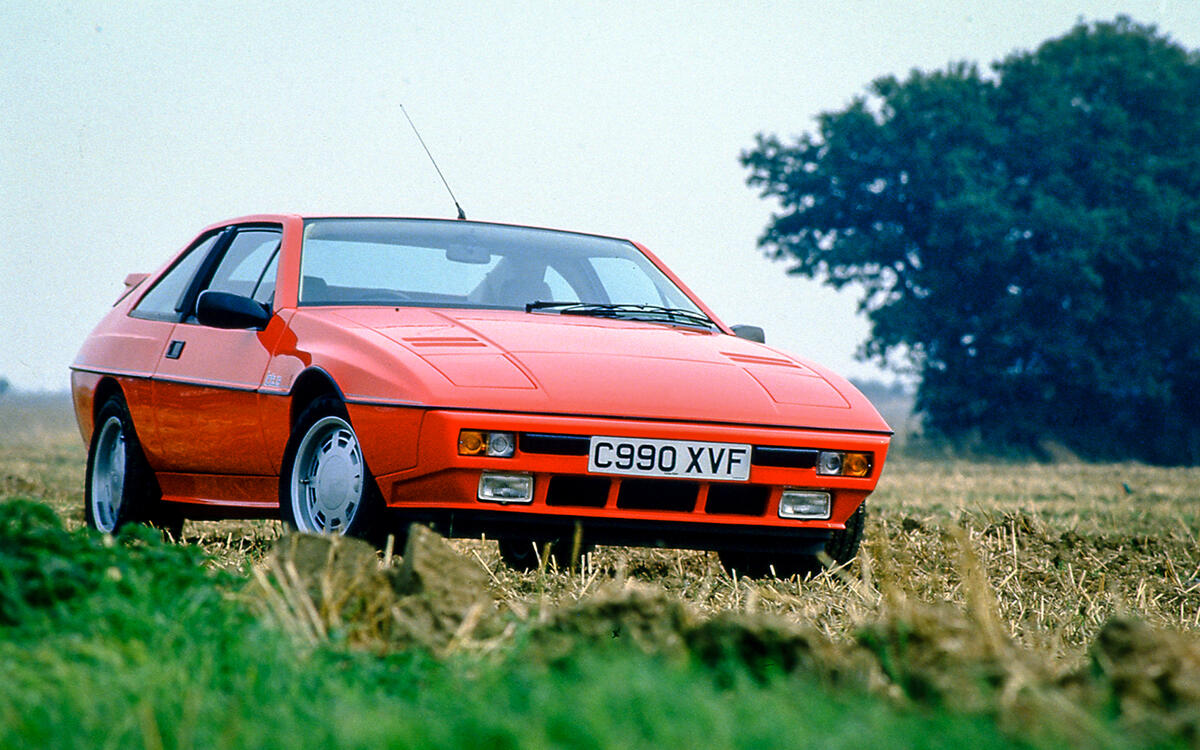 Slide of
Slide of
The British sports car specialist Lotus has made many fine cars over the years since its foundation in 1952.
Here we take a look at its greatest hits, and its rather more exclusive models. Some were deliberately so, others just because the market proved less than receptive - time to find out why. We start with the biggest sellers.. Slide of
Slide of
BIGGEST - 10: Lotus Seven (1957-73) – 2,477 sold
The 10th biggest selling Lotus was a simple two-seater open top-sports car. The car created by Lotus founder Colin Chapman was popular because you could use it as a road car during the week and qualify for racing at the weekend. If you were feeling brave, you could also assemble from ‘complete knock down’ yourself to avoid tax.
 Slide of
Slide of
9: Lotus Esprit (1976-90) – 2,919 sold
One day in 1976, Lotus accidentally-on-purpose parked its new Esprit outside the London offices of one Albert R. 'Cubby' Broccoli - and its worldwide movie stardom in James Bond's The Spy Who Loved Me was assured. A combination of fine handling, cutting edge Ital design and nearly-free publicity revived Lotus. A missile-launcher was not an option though.
 Slide of
Slide of
8: Lotus Exige 2 S (2006–11) – 3,306 sold
Born from the Lotus racing series and powered by a supercharged Toyota engine, the Exige was favourably compared to more expensive rivals. A favourite with track-day enthusiasts because of its razor-sharp handling and a more powerful engine over the regular Elise; many examples have received performance upgrades to cope with extended circuit work.
 Slide of
Slide of
7: Lotus Elise 2 (2000-06) – 4,535 sold
Building on the success of the original Elise and helped along by GM investment - which also saw the creation of sister car Vauxhall VX220 (called Opel Speedster in Europe) - the Elise 2 had an improved interior, better refinement and a revised 1.8-litre K-series engine. The styling was more aggressive, using cues from the 2000 M250 concept car.
 Slide of
Slide of
6: Lotus Elan & Elan S2 (1989-92, 1994-95) – 4,655 sold
The M100 Elan was the first, and last, front-wheel-drive Lotus. GM money funded the car, which featured the reliability of a 1.6-litre Isuzu engine, with or without a turbo. Unable to make it profitable, the design was sold to Kia who continued to make it for three years.
 Slide of
Slide of
5: Lotus Elan + 2 (1967-74) – 5,168 sold
How do you expand on a winning formula? Add a foot. The Elan + 2 features the practicality of rear seats and the twin-cam engine had more power to cope with the extra weight. It was also the first Lotus not to be sold in kit form, which improved reliability.
 Slide of
Slide of
4: Lotus Elise (1996-01) – 8,613 sold
The car that saved Lotus from going bust. The roof was fiddlier to erect than a tent in a storm and the high door sill was an obstacle, but a combination of low weight and perfect steering won it many fans.
 Slide of
Slide of
3: Lotus Elise 2 111R (2003-11) – 8,628 sold
The 111R was not the first Lotus to use a Japanese engine, but with a useful 189bhp, Toyota power boosted performance over the 111S and customers also gained an extra ratio. It was the Elise that Lotus were finally able to sell in America as the previous K-series engine never met US emission standards.
 Slide of
Slide of
2: Lotus Europa (1967-75) – 9,887 sold
The Europa’s ambition was to use a mid-engined layout, which had firmly become a mainstay of Grand Prix cars, and applying it to volume sports car production. Originally bonded to the chassis for maximum structural stiffness, the lightweight fibreglass body helped make the most of the Renault-sourced engine’s rather modest 82bhp.
 Slide of
Slide of
1: Lotus Elan (1962-72) - 12,224 sold
Initially available in kit form, the cute little Elan was the first Lotus to use a steel backbone chassis with a lightweight fibreglass body. A compliant ride was assured with independent suspension all round, backed up by four-wheel disc brakes. Its starring role in the Avengers TV series cemented its iconic status, and helped it become the best-selling Lotus ever.
 Slide of
Slide of
SMALLEST - 10: Lotus Excel (1982–92) – 1,327 sold
The 10th smallest-selling Lotus was the Excel. The car did benefit from parts sharing with Toyota, but this heavily revised version of the earlier Éclat still featured odd styling and simply wasn’t as well built or reliable as its Porsche 944 rival. The major changes were underneath with the five-speed gearbox and brakes taken from the Supra.
 Slide of
Slide of
9: Lotus Elite (1957-63) – 1,078 sold
The Elite featured an innovative fibre-glass monocoque body and was remarkably aerodynamic for its time. The star of the 1957 London motor show, it featured a 1.2-litre Coventry Climax engine with 75bhp. Poor build quality (it was available in kit form), lack of cabin ventilation, and excessive vibration didn’t help sales however.
 Slide of
Slide of
8: Any Lotus Evora with 2+0 seating (2009-present) – 614 sold
It seems strange given that the back seats in an Evora are borderline impossible for human use, but customers don’t like the 2+0, despite it being 10kg (22 lbs) lighter and cheaper by £1,455 (US$2300). The worst seller is the 410 Auto 2+0 with a mere five sold since it was introduced in 2016.
 Slide of
Slide of
7: Lotus Exige (2000-02) – 583 sold
The Exige was aimed at serious track-day goers who could afford to splash out on this stripped-out road-going racer. Trouble was the Exige sported the face of the old Elise and when customers saw what the new one was going to look like, they weren’t going to pay nearly £33,000 (around $60,000 at the time) for something that looked like the old model.
 Slide of
Slide of
6: Lotus Europa (2006-10) – 458 sold
Guess what? It’s another ‘new’ Lotus based on the Elise. Except this one is a grand tourer. No, we weren’t convinced and neither were you. When you consider that the more capable Porsche Cayman (launched around the same time) didn’t cost much more, it is easy to see why this was never a sales hit.
 Slide of
Slide of
5: Lotus 2-Eleven (2007-11) – 358 sold
Yet another Elise spin off, this time with the Toyota 2ZZ-GE supercharged engine with 252bhp. The car was stripped of all unnecessary weight to create, in road-going form, a 670kg (1477 lbs) track-day weapon that could do 0-60mph in 3.8 seconds and the potential of 150mph.
Read the Autocar review of the Lotus 2-Eleven Slide of
Slide of
4: Lotus 340R (2000) – 340 sold
An Elise-based special edition which featured no doors, no roof and could only be bought in a silver and black colour scheme. Yokohama developed the tyres especially and it could in fact be made road legal. The engine was a development of the K-series called VHPD (Very High Power Derivative) with 177bhp.
 Slide of
Slide of
3: Lotus Esprit Sport 350 (1999-2001) – 48 sold
A limited edition, Lotus only ever planned to make 50 of these. The Sport 350 was a development of the V8 model to create the ultimate track-day car. It featured improved AP racing brakes, stiffer suspension, OZ Racing alloys and a massive carbonfibre rear wing.
 Slide of
Slide of
2: Lotus Evora Motor Sports GT4 Racing (2011-15) – 21 sold
At a cost of £125,000 (US$200,000), the racing GT4 had significant alterations to make it a racer including bigger brakes with four pot calipers all around, a Cosworth-tweaked 4.0-litre engine which put out 355bhp and an X-trac 6-speed sequential gearbox. The GT4 also had its interior stripped out making the car just 1,200kg (2,646 lbs).
 Slide of
Slide of
1: Lotus Elise 2 SPS (2011) – 5 sold
And the most exclusive Lotus ever is... the Lotus Elise 2 SPS. Hailed as a clever way of increasing the pure driving experience by using lightweight technology, the Serial Precision Shift Elise featured fashionable paddle shifters connected to a robotised manual transmission.
It seems customers saw it as a £1,500 ($2,400) overcomplication incongruous with the Lotus philosophy and didn't exactly queue up to buy one.
Just add lightness - and sales
Advertisement











































